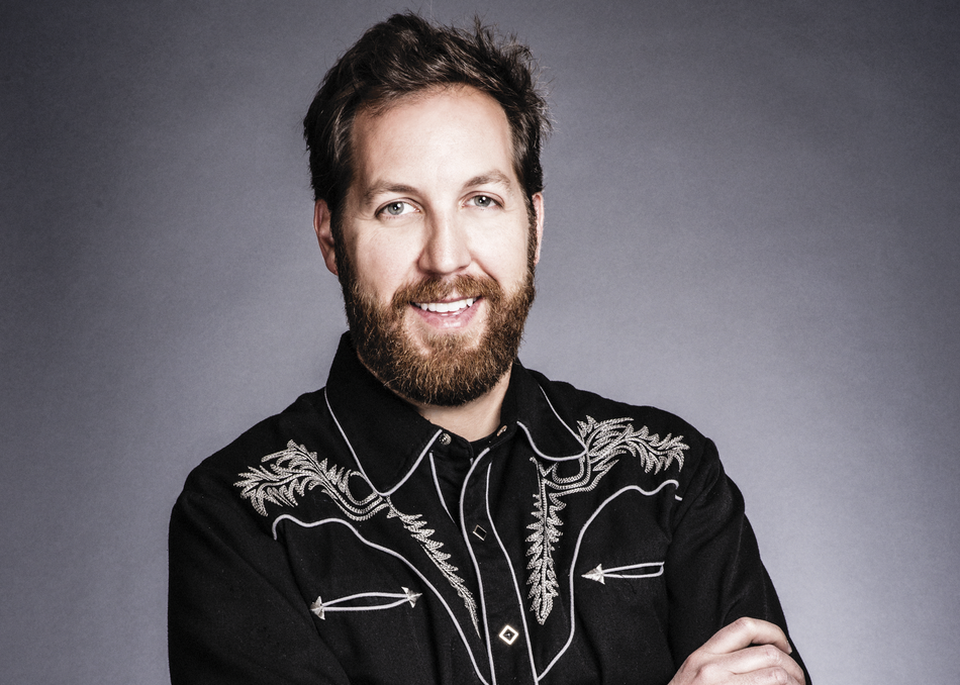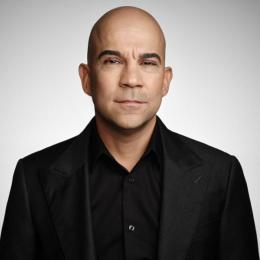CHEAT SHEET
- Be transparent. When encountering resistance or going through a tough negotiation, don’t respond with aggressive pushback. Instead, be transparent about your intended result.
- Get to the heart. Finding common ground with your seller or opposing counsel can create a positive relationship that makes a difference in reaching a deal.
- Big picture. Don’t become fixated on “small wins” with little overall impact. Focus your efforts on the most essential aspects.
- Relationship-oriented. Avoid focusing on the merger from solely a transactional point of view. Envision what this relationship will mean for your company years from now
When there is a break during my son’s hockey game, or I find myself at a large dinner party, the conversation will eventually turn to employment. I typically explain that I have been working as a general counsel for a decade. Most nonlawyers still have the mistaken notion that most of a lawyer’s work takes place in a courtroom. Once I dispel that myth, I talk about my involvement in business transactions and M&A. Their eyes will light up and they’ll express their love of the TV show Suits and how they “understand what that means.” While Suits is the furthest thing from the real legal world, most GCs typically struggle to explain their day-to-day activities.
Like other GCs, I work on everything from employment law to financing to intellectual property. But nothing seems to capture the interest of nonlawyers like M&A and the negotiations that accompany it. They imagine a fraught back-and-forth that is won by the lawyer who can ascertain the opponent’s psychological weakness. In reality, I have found that mutual respect is the best course of action for general counsel. To confirm my theory, I spoke with three people whose life experiences can be useful when going into an M&A negotiation: venture capitalist Chris Sacca, journalist Cal Fussman, and an American football executive David Cohen.
How my CEO inadvertently gave me this article idea
Ten years ago, when I was in private practice, I was approached by a CEO who convinced me to move in-house. Ten years later, I am still working with the same team. Except now, we have a decade of experience working together on all sorts of deals, from small ones to million dollar ventures. Every deal has a story and every deal has its characters. At the same time, most deals have a similar script that begins when external counsel enters the picture.
My partners are engineers but above all entrepreneurs who have conceptualized, built, and sold businesses in less time than most business people take to become cash-flow positive or credit worthy. While our professional relationship is one of mutual respect, our educational backgrounds have created a challenge to appreciating our differing points of view. There’s a stereotype (that is partly true) that engineers see the world as black and white with a clear result — while lawyers see things as gray with various possibilities and open-ended responses. Like most entrepreneurs, their impatience with the substance and form of legal issues can be challenging. Still, recently, they raised a simple question, which forced me to reflect (and became the basis for this article).
During our fifth acquisition of 2018, once the high-level points were agreed to with the seller, the external counsel entered the picture with his “kickoff” call making aggressive demands and setting the stage for a long and difficult transaction. By now, my partners knew this ended with everyone meeting somewhere halfway. They asked me, “Why do lawyers do this? We know we will end up somewhere halfway. Why not start there and be transparent?” Sam, our CEO, added: “The bravado and bluff seem scripted.”
As we know, there are many reasons discussions begin like this: to show value, try new negotiation tactics, or simply to justify premium rates. There is more to it of course, including what many believe is a negotiation strategy: namely, to show them who is in charge.
As general counsel, M&A puts you in a different position than external counsel: You leverage your role as a buyer (or seller) to move the deal forward. On one hand, you typically get exposed to the seller before counsel is introduced. This period can be used to gain trust and create a bond with the seller. You also have greater insight into the bigger picture. Other GCs don’t share this view and will stick to the idea of being the watchdog, making it clear they intend to “play hardball.” I have played both roles with mixed results. On one hand, I have forged bonds with sellers — to the point that they have sent me late night text messages to outline last-minute concerns. On the other hand, I have elected to not budge on issues, which netted little wins but, in the long term, created an adversarial dynamic that led sellers to raise flags on every matter post-closing (with little interest in assisting on transition issues beyond contractual obligations).
In attempting to find the right balance of opinions, I spoke to three individuals with distinct skillsets who all manage to close “the deal” in their own way. They all shared a common perspective: transparency and keeping the bigger picture in mind. These ideas sometimes counter the approach lawyers use in deals. While lawyers with a reputation for closing complex transactions might be an understandable point of reference, I believe there are greater lessons to be learned from a variety of professionals including venture capitalists with proven track records and journalists who have managed to get especially complex individuals to open up. Can GCs learn from these individuals and use these skills to better their strategy?
Lessons from the VC world
Chris Sacca founded Lowercase Capital, which has become one the most successful venture capital funds in Silicon Valley. He has also appeared as a guest on a few episodes of ABC’s Shark Tank. Sacca’s funds have invested seed money in early technology companies, including Twitter, Uber, Instagram, Twillio, and Kickstarter. Sacca is no stranger to negotiations, saying, “I have been part of hundreds (thousands?) of deals in my career, and have had a chance to try a variety of negotiation methods. I’ve been sympathetic and lovable at times leading with a ‘pre-negotiated’ middle ground offer, and other times I have tried being an unhinged maverick leading with unreasonable demands.”

— Chris Sacca, Venture Capitalist
Sacca began his career as a lawyer at Fenwick & West and was later in-house at Google, where he was in a unique position to understand both the investor and lawyer’s point of view. In the end, he always opts for a straightforward no-nonsense approach. This has always been his go-to strategy.
Sacca knows the textbook approach used by many external counsel well, explaining that “what I’ve found is human beings, and especially lawyers, don’t feel like they have done their job if they can’t extract some concessions from the other side. Small gives are validating to professionals, particularly to those hoping to justify a premium hourly rate to a client.”
For Sacca, transparency is the key “card” to countering the negotiation game. “The only exception is when my side is 100 percent willing to walk away from the deal. When that is the case, the other side can smell the optionality on you and they know the offer you are putting forward is your best and final. When I raise the money for my venture funds, the documents are already in final form. There is no lead investor who blows US$250,000 on legal fees for each side. Instead, I worked with my counsel to draw up documents that are reasonable and balanced right out of the gate.” On top of bringing parties down to earth and filtering those he doesn’t want to work with, Sacca suggests that “it allows [him] to feel proud of the terms and be willing to defend each of them with a straight face, but at the same time, not waste time in a pointless posturing exercise. If any investors balk, I let them know we won’t be taking their investment. To be clear, I did this before I had any experience in the industry or frankly any negotiating leverage. But even now with my success, I have continued to use those same documents with no material changes.”
This strategy goes both ways and his own counsel team is held to the same expectation. “With that in mind, when working with my own counsel, they know we shouldn’t waste time nitpicking. We give everything a review for the highest-level issues we care about. Usually those don’t arise and we can just sign the deal. But we reserve pushback only for terms and concerns over which we would be willing to walk away from the transaction. This spares us bravado and hand-waving and makes for calm and candid discussions: ‘We can’t agree to X because it creates material risk Y for our fund. If that means we can’t do business together, our apologies. We just can’t put our investors in that position. Thanks for understanding.’ That works almost all the time. When it doesn’t, we walk away and consider ourselves lucky that our potential partner revealed now, rather than later, that they aren’t willing to accede to reasonable asks.”
Chris Sacca has the advantage of having been on both sides of the fence and this has proved to be invaluable to see the bigger picture and using transparency to make his position clear early in the process.
Many readers may not have heard of journalist Cal Fussman but he has interviewed many of our recent historical figures. Fussman has written for Esquire, and interviewed Mikhail Gorbachez, Jeff Bezos, Bruce Springsteen, Pele, and Muhammed Ali, among others. He’s a New York Times best-selling author and publisher of countless memorable pieces, including his experience training as a sommelier at Windows on the World restaurant in the World Trade Center and training for six months to get into the boxing ring with former world champion Julio Cesar Chavez. His interviews are memorable because Fussman builds trust with his subjects, getting honest answers to tough questions — skills that can be incredibly useful in M&A work.

— Cal Fussman, Journalist Extraordinaire
Fussman’s strategy? “Go straight to the heart and not the head,” he advises. “If you get the heart, you can get the head.” While this may sound superficial in M&A, I have always found that finding a real common ground with a seller in a transaction dictates the relationship for the following weeks or months. Fussman advises professionals in various industries from cybersecurity to human resource professionals — and his method has been successful, regardless of industry.
“I’ve had military generals tell me that there is evidence that my style gets more information during interrogations than waterboarding, but I’ve never applied what I’ve learned about the art of connection to the legal world — or even been asked about it,” Fussman admits, adding, “There is something very telling to opening yourself up early on and showing vulnerability.” This is completely counter to the manner in which most attorneys approach an acquisition. Conventional wisdom says that giving an edge will demonstrate weakness and can set the tone for the entire transaction. However, at the same time, fighting over territory early on can lead to a long, stressful drawn-out negotiation, where eventually even the most minute details can gum up the process. For many attorneys, this is the natural course of a transaction and the only way to avoid losing ground; still, based on both strategies outlined by Sacca and Fussman, as well as my experiences, hardball is not the best way to get exceptional results.
Of course, a more nuanced approach will not be optimal for all attorneys. External counsel brought in for specific issues will have the client’s best interests at heart, especially when they are advising on a specific matter (be it tax, employment law, or litigation). However, GCs can use their skill and position within the organization to carry the deal forward, and rather than create an argumentative playing field, be the voice of reason for the entire transaction. Establishing a reputation as the voice of reason early on, and being able to see the bigger picture as a trusted confidant, will bring results that both sides will appreciate in time.
David Cohen began his legal career with the Anaheim Angels, the US baseball team, where he was the director of legal affairs and risk management for nine years. In 2013, he joined the US National Football League (NFL)’s Tampa Bay Buccaneers as general counsel and recently moved into a business role as head of operations for the newly formed Alliance of American Football (set to launch in early 2019). Cohen has been involved in many deals — from employment contracts to sponsorship agreements — and has always found that having business people on the call brings everyone to a common goal. Cohen believes “the outside counsel can take a different tone when business people are involved.”

— David Cohen, American Football Executive
Cohen recalls a deal that is a prime example of bringing everyone together and avoiding unnecessary complications: “I was working with a professional sports organization in what was their first sponsorship deal and they hired counsel they perceived as very good. An eight-page agreement was returned as a 26-page behemoth and two-page recital on things not germane to the contract.”
The deal got even more complicated on a call with all parties involved. They only got three points into the contract when it was clear no one was budging. In an effort to be transparent, Cohen remembers saying, “Look, our goal is to get a deal our business people can read and understand.” The outside counsel was silent and stated, “I’m outside counsel. I get compensated on wordcounts: Can you help me get paid?”
Cohen’s example highlighted Sacca’s theory of small gains: “If he has to sit there and defend why he is wasting their time, it makes them think twice and defend it. Having a businessperson present can change the tone of the call. Don’t let outside counsel do their thing. You are allowing them to go back and forth. Their goal is not the fastest resolution as at times.”
To avoid this tedium, Cohen recommends keeping external counsel focused on the big picture. “Don’t be afraid to have business people speak to their counsel. Don’t be afraid to use them to your advantage.”
Whether it is Cal Fussman trying to get Muhammed Ali to open up, Chris Sacca putting together a limited partnership, or David Cohen negotiating a sponsorship deal for a professional sports team, they all agree: Transparency and keeping the end goal in mind drives the deal to the finish line, opens up the interview, and brings investors together. For GCs, the need for transparency (including with external counsel) and keeping an eye on the big picture or end result is what will lead to successful transactions — which translate into longstanding relationships.
Lessons learned
The most meaningful transactions and relationships I have built with sellers and opposing counsel are not where I tried to impress them with hardline positions or the limits on where we would go to get what we want. Instead, those where I found common ground on passions we shared set the table for the transaction — where mutual respect was cemented and trust established for a fair and equitable transaction. Years later, I get sporadic text messages from sellers sharing a great Italian red wine he just tried and telling me a bottle is on the way. Over the course of the years, when issues arose, he was more than happy to help us deal with them (and happy to speak with a seller who wanted a reference on our past deals).
Many of us can recall spending endless hours drafting, negotiating, and threatening to walk away from a transaction for a provision that, in the grand scheme of things, is minor. At times, external counsel will only reinforce this strategy for small wins — warning that small concessions lead to big wins. Avoid falling into this trap. See the bigger picture.
Set the right tone.
Oftentimes in a transaction, one side will be using a transactional attorney they have never worked with before. The natural tendency for the attorney will be to show value through a hard line. I have countered this by being completely honest and voiced my displeasure with them on the call or through an introductory email (hoping it does not set the terrain for a long, expensive transaction for their client). While it is never advisable to turn a client against their attorney, it is at times necessary to point out where the constant pushback is coming from. In time, this will put an unnecessary spotlight on counsel. This is part of, as Cohen says, “using business people to your advantage.”
Avoid fighting back.
A common reaction when encountering an aggressive attorney is to be equally aggressive — making it clear further pushback will be a hard-fought battle. Avoid this. Instead, use it strategically. When I receive a redlined version of drafts that change language for the sake of demonstrating value, I will go ahead and accept the superfluous changes and focus on the substantial ones — later commenting that 80 percent of changes have been accepted but a few provisions need to be discussed. This creates goodwill with the other party and goes a long way in winning more important points.
Show your cards.
There are two positions that can be strategically weak. One: when a seller enters what I call “seller mode” and begins imagining being out of the business and moving on to the next phase of their life. The second one is when a buyer wants the asset at all costs. In both these scenarios, they will agree to anything. The flip side is when a party is willing to walk away from a deal. When the other side can sense there’s no room for negotiation, games and posturing end quickly. If this is an option, let them know quickly and it will change the course of negotiations.
Use your skills for the big picture.
Through years of experience, lawyers gain qualities and skills that can be valuable assets in most negotiations. Still, some will instinctively debate every provision regardless of how minor — losing focus on the bigger picture. Used properly, the skills of a seasoned lawyer who sees this bigger picture can dictate and carry out even the toughest negotiations. Typically, your external counsel will be looking at the deal solely from a transactional point of view. You, on the other hand, need to see the big picture that translates into what this relationship will look like in the long term for your company. As Cohen states: “Negotiation is the basis of a relationship that will go on for years. You set the tone for what that relationship will be. Do things that will build trust rather than destroy them. You can grind them down for an extra comma, but what does that do for the relationship?”
Use your ACC resources.
The first thing I do when I learn who opposing counsel will be is surface level research on LinkedIn — and the company bio. If they are an ACC member, this can be an invaluable asset in your preparation. In one case, an opposing GC known to be very difficult was a fellow ACC member. We spoke for 15 minutes on our first call about our past experiences at conferences and involvement in our local chapter. This completely changed the scope of our relationship.
As Cohen asserts: “Develop the relationships via ACC if there is common ground. Having that relationship will make the other side think less combatively.”
Seek input from outside the legal realm.
Attorneys, whether general counsel or those in private practice, assume honing our craft means looking at our profession and learning from those with the most respected reputation be it in M&A, litigation, etc. In doing so, we rarely look past our own profession as we have ingrained assumptions that these concepts are not widely understood beyond our fellow counsel. In reality, it is not those who follow the same script or take the hardest stance who stand out. It is those who manage to deal with matters (whether simple or complex) in a fluid, efficient manner and do so with professionalism and transparency.




